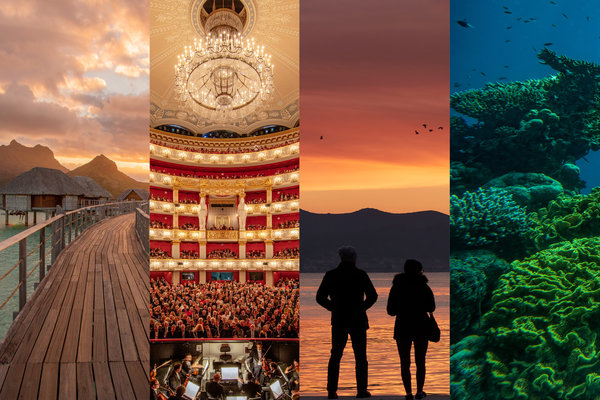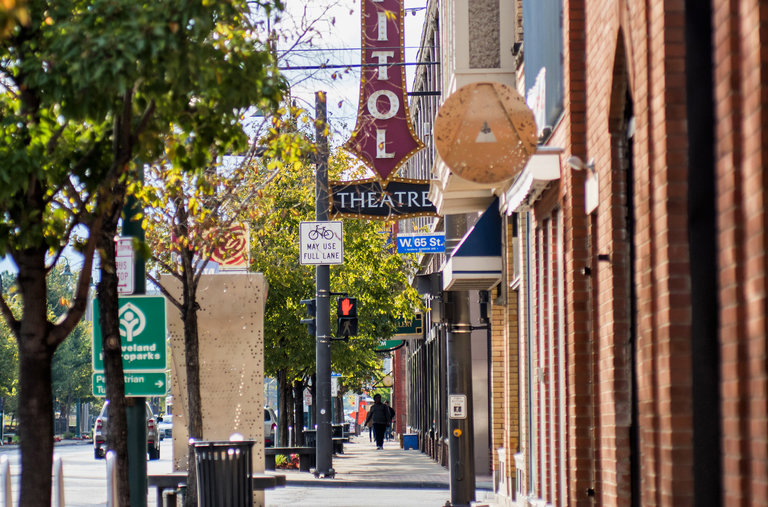A misconception still clings to Cleveland and it comes down to three words: river on fire. From 1868 to 1969, the polluted Cuyahoga River, which cleaves Cleveland into east and west, caught fire 13 times. In 1969, a photo in Time magazine dramatically showed a brave little fire department boat battling a wall of angry flames.
It didn’t matter that the photo was of a 1952 fire on the river. The article shocked a nation, and Cleveland’s burning river became a national punch line and shorthand for Rust Belt despair. James Earl Jones even narrated a documentary about it.
This June marks the 50th anniversary of the day in Cleveland when the Cuyahoga River burst into flames for the last time. Outrage over the disaster led to the creation of state and federal environmental protection agencies and to the passage of the federal Clean Water Act.
Thanks to environmental safeguards and the formation of a regional sewer district, the thriving river is helping to redefine Cleveland’s public face, to a point where tourism is up. In 2017, Destination Cleveland, the regional convention and visitors bureau, announced that Cleveland had seen an average increase of nearly 550,000 visitors per year for the previous eight years.
Then there’s this striking example of how a river that once was so toxic that it bubbled and oozed like a caldron is producing edible marine life: the Ohio E. P. A. announced in March that fish from the Cuyahoga River, including catfish and common carp, are safe to eat.
“Clevelanders take their river very personally, and that’s why the anniversary is so important to Cleveland,” David Stradlin, the co-author of “Where the River Burned: Carl Stokes and the Struggle to Save Cleveland”said. “It’s a success story.”

Merwin’s Wharf is a popular bar and grill just steps from the Cuyahoga River.CreditKristin Vegera for The New York Times
To commemorate the river’s rebound, hundreds of local arts and environmental organizations have joined forces for Cuyahoga50, a series of events, exhibits, performances and conferences taking place this year that aim to introduce or reacquaint visitors with the river. The efforts come as American Rivers, a national conservation advocacy organization, in April named the Cuyahoga its River of the Year.
“It really is the crown jewel of the city,” said Bob Irvin, president and chief executive of American Rivers.

The biggest Cuyahoga50 events use art to reflect on the river. The splashiest piece will appear on June 22, when pedestrians will get rare access to the former streetcar level of the Cuyahoga-spanning Detroit-Superior Bridge, where Squidsoup, a design collective based in the U.K., will set up two large-scale, multi-sensory light installations. The exhibition is part of the Cleveland Foundation’s Waterways to Waterways initiative, which paired local and international artists to create works that link the Cuyahoga to global clean water efforts.
From June 19-22, families will want to check out Xtinguish Torch Fest, a series of cultural and historical events in parks along the river, from Cuyahoga Falls to Akron. On view through Sept. 22 at the Cleveland Museum of Art is “Cuyahoga River Lightning,” a show of monumental gunpowder works by the Chinese artist Cai Guo-Qiang. Throughout 2019, several locations in Northeast Ohio, including the Cleveland airport, will display archival and contemporary photos of the river as part of the exhibit “Crooked River Contrasts.”


In Cleveland’s compact and revitalized downtown, the Cuyahoga River anchors the Flats, a residential and entertainment district where industry once created the toxic waste that caused river fires in the first place. Now rowers and paddlers are ubiquitous. Companies like Great Lakes Watersports offer boat and kayak rentals. The Flats is also home to new apartments, a water taxi, a skate park and an artfully quirky Aloft hotel. Popular restaurants with intimate riverside views include Merwin’s Wharf, a casual bar and grill run by the 23,000-acre Cleveland Metroparks system, and Collision Bend Brewing Company, a brewery with views of the massive iron-ore freighters that crawl down the river.
The Flats is also a good place to start hiking, biking or walking the Towpath Trail, a meticulously restored 87-mile path that mostly follows the route of the Ohio & Erie Canal. The trail winds through residential, industrial and forested areas in Cleveland all the way to Tuscarawas County, some 70 miles to the south. The most scenic parts of the Towpath Trail include waterfalls, covered bridges and other made-for-selfie places in the Cuyahoga Valley National Park, which spans 22 miles of the Cuyahoga River between Cleveland and Akron.
A great place to begin is in the Tremont neighborhood at a river overlook across from Sokolowski’s University Inn, where Clevelanders have loaded up on fat, buttery pierogi for more than 92 years. Want someone else to take the wheel? The Cuyahoga Valley Scenic Railroad runs adjacent to the Towpath Trail and the Cuyahoga River, and offers excursions year-round.
Clevelanders have a sense of humor about their burning river. Bars, restaurants and other spots have embraced the river’s combustive past. One example? The popular Burning River Pale Ale from Great Lakes Brewing Company, which runs a brewpub in the bustling Ohio City neighborhood. On June 21 and 22, that beer will be on offer at Great Lakes Burning River Fest, a music and craft beer bash to be held at a historic Coast Guard station on Whiskey Island, at the mouth of the Cuyahoga.
As a Cleveland native, having grown up under the negative shadow of the burning river, I found it remarkable, during a recent tour of the winding Cuyahoga, to see how much has changed in my lifetime.
Jim Ridge, the founder of Share the River, a nonprofit group that heightens awareness about the Cleveland waterfront, said the Cuyahoga River has achieved something that few could have imagined decades ago. It’s a destination.
“Seeing recreational aspects on the body of water that ignited the environmental movement is a game changer for locals, but also for folks well beyond our ZIP code who are going — ‘wait, that’s not the Cuyahoga River I had in mind,’” he said.
Follow NY Times Travel on Twitter, Instagram and Facebook. Get weekly updates from our Travel Dispatch newsletter, with tips on traveling smarter, destination coverage and photos from all over the world.







